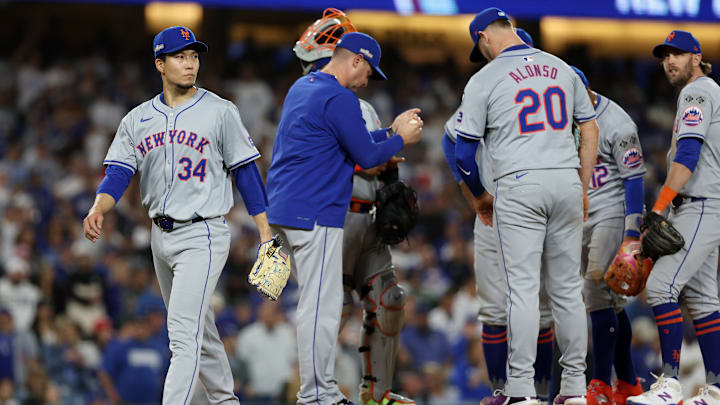Stretch out your fingers. Whenever your team is eliminated, some pointing of said finger is necessary. We do it with the 2024 New York Mets with a lot more humor, whimsy, and joy. Fans aren’t going to look back at this team with fury.
Nevertheless, we might feel the need to scapegoat some of what unfolded in the NLCS. One player, one plan, and one decision in retrospect should have us feeling at least a little bit angry.
Mets player scapegoat: Kodai Senga
Nobody had a rougher NLCS than Kodai Senga. His performance in Game 1 had us all afraid of what he’d do next. As it turns out, he had one more appearance left in him in Game 6. Sadly, he faltered yet again, this time in relief.
The Mets were still within reach of catching the Los Angeles Dodgers when Senga entered from the bullpen. For a guy who seems more into his routine than Rain Man, we had to cross our fingers for a crisis to be averted. It wasn’t meant to be. Another 3 earned runs scored against him. A pair of walks and a hit batter helped create the chaos.
It’s easy to criticize Senga for how poorly he pitched in the playoffs. A home run off the bat of Kyle Schwarber to lead off Game 1 versus the Philadelphia Phillies seemed like an omen. Fortunately, the Mets magic took over and they were able to overcome their NL East foes. Not so much with the Los Angeles Dodgers.
Senga finished the postseason with a 12.60 ERA. He walked 7 batters in 5 innings of work while striking out 4. He’s kind of at the center of a lot of blame. That’s because the worst plan of the NLCS involved him, too.
